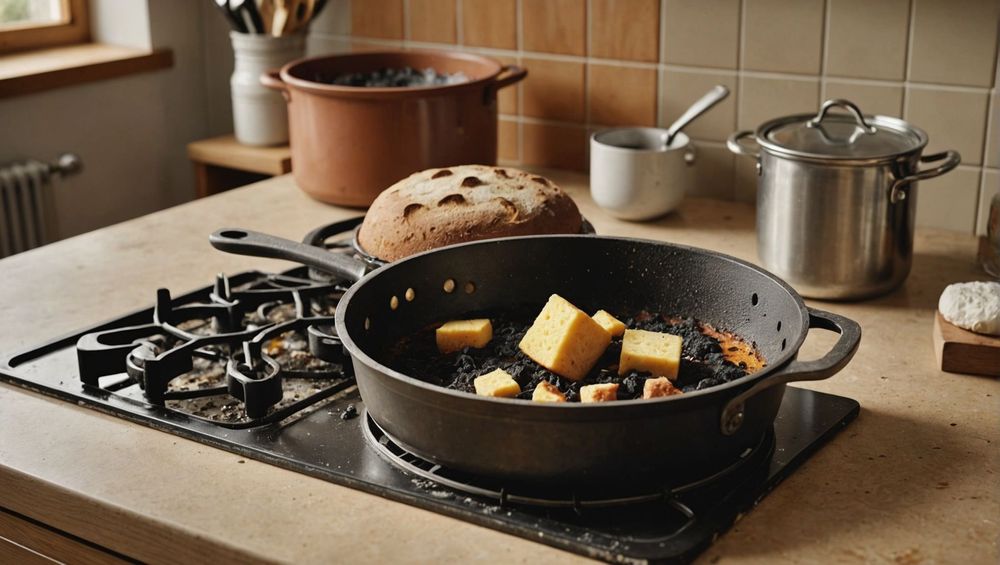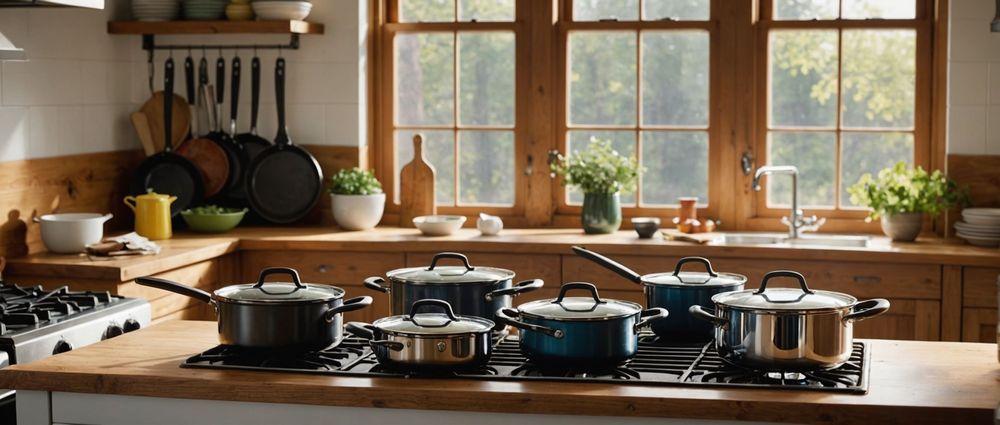Cleaning a burnt pot or pan can feel like an overwhelming task, but with the right techniques and materials, you can restore your cookware to its former glory. Whether it’s a cherished family heirloom or a modern non-stick pan, there are several effective methods to tackle the stubborn residue left by burning. In this guide, we will explore simple and efficient ways to remove burnt food, ensuring that your pots and pans not only look clean but also perform well.
Assess the Damage

Before diving into cleaning, it’s essential to assess the extent of the damage caused by burning. Take a moment to inspect your pot or pan for any discoloration, significant charred areas, or possible warping. This assessment will inform the cleaning method you choose:
- For Light Burns: If there are just a few spots of minor burns, a gentle scrubbing with soap and water might suffice.
- For Medium Burns: An overnight soak in a baking soda solution or vinegar may help lift the charred residue.
- For Severe Burns: You might need to resort to a more aggressive scrubbing technique, using tools like steel wool or specialized cleaning agents.
Understanding the condition of your cookware allows you to select the appropriate cleaning method while minimizing the risk of damaging your pots and pans further.
Simple Soak Method
The soak method is excellent for loosening burnt-on food. Follow these steps to utilize this approach effectively:
- Fill the burnt pot with warm water, covering the burnt area completely.
- Add a few tablespoons of baking soda or vinegar for enhanced cleaning power.
- Allow the pot to soak for at least 30 minutes to an hour.
- After soaking, gently scrub the burnt areas with a non-abrasive sponge, applying extra baking soda if necessary.
- Rinse thoroughly with warm water and a drop of dish soap to ensure all residue is removed.
This method is eco-friendly and utilizes common household items to make your pots and pans clean without harsh chemicals.
Scrubbing Techniques for Stubborn Burns
If soaking fails to yield satisfactory results, you may need to employ scrubbing techniques. Here are a few methods that are effective:
- Baking Soda Paste:
Mix baking soda with water to create a thick paste. Apply it to the burnt areas and let it sit for a few minutes before scrubbing. - Vinegar and Baking Soda Reaction:
Pour vinegar over the burnt surface, then sprinkle baking soda on top. The fizzing reaction helps to lift burnt food. - Salt and Lemon Juice:
For an abrasive scrub, mix coarse salt with lemon juice, creating a gritty paste that can help scrub off burnt remains. - Steel Wool for Heavy Duty Cleaning:
For particularly stubborn pans, using steel wool can be effective. Just be cautious as it may scratch non-stick coatings.
Always remember to use gentle pressure while scrubbing to prevent damaging the surface of your cookware. A little patience goes a long way!
Utilizing Chemical Cleaners

If the previous methods don’t yield the desired results, chemical cleaners can be potent alternatives. However, it’s important to choose the right product for the type of cookware you have:
- Oven Cleaner:
For heavy-duty cleaning, you can apply oven cleaner to the burnt surface. Follow the manufacturer’s instructions carefully. - Commercial Pot and Pan Cleaners:
Look for products specifically designed for cookware; they often contain enzymes that break down burnt food. - Acidic Cleaners:
Products containing citric acid can be effective in dissolving burnt residues.
Always use rubber gloves and work in a well-ventilated area when using chemical cleaners to ensure your safety while effectively restoring your cookware.
Preventing Future Burns
Once you have successfully cleaned your burnt pot or pan, it’s essential to adopt practices that help prevent future mishaps. Here are some tips:
- Use the Right Heat Settings:
Cook on low or medium heat to prevent burning your food. - Monitor Cooking Times:
Stay nearby while cooking to react promptly if you smell something burning. - Invest in Quality Cookware:
High-quality pots and pans may offer better heat distribution, reducing the likelihood of burns. - Regular Maintenance:
Clean your cookware regularly after use to prevent build-up and potential burns.
Taking these proactive measures will extend the life of your pots and pans significantly and make cooking more enjoyable.
Conclusion
Cleaning a burnt pot or pan doesn’t have to be an arduous task. By assessing the damage and employing the right methods—whether it’s soaking, scrubbing, or using chemical cleaners—you can restore your cookware effectively. Moreover, by practicing preventive measures, you can minimize the chances of burning your pots and pans in the future, making your cooking experience more pleasant. With these tips, you’ll be well-equipped to tackle any stubborn burns and keep your cookware looking pristine.
FAQs
1. Can I use vinegar on non-stick pans?
Yes, vinegar is safe for non-stick pans, but avoid using abrasive cleaners or scrubbers that may damage the coating.
2. Is it safe to use steel wool on my stainless-steel pots?
Steel wool is generally safe for stainless-steel pots but should be avoided on non-stick and other delicate surfaces.
3. How do I know if my pot or pan can withstand chemical cleaners?
Check the manufacturer’s instructions or labels on the cookware to see if chemical cleaners are recommended or contraindicated.
4. What’s the best way to prevent food from burning in the first place?
Using a thermometer to monitor cooking temperatures, adjusting heat settings, and stirring frequently can help prevent burning.
5. Should I throw away a pot or pan that has severe burns?
Not necessarily. Most burned cookware can be cleaned effectively. Assess the damage first, and then apply appropriate cleaning methods before deciding to discard it.



